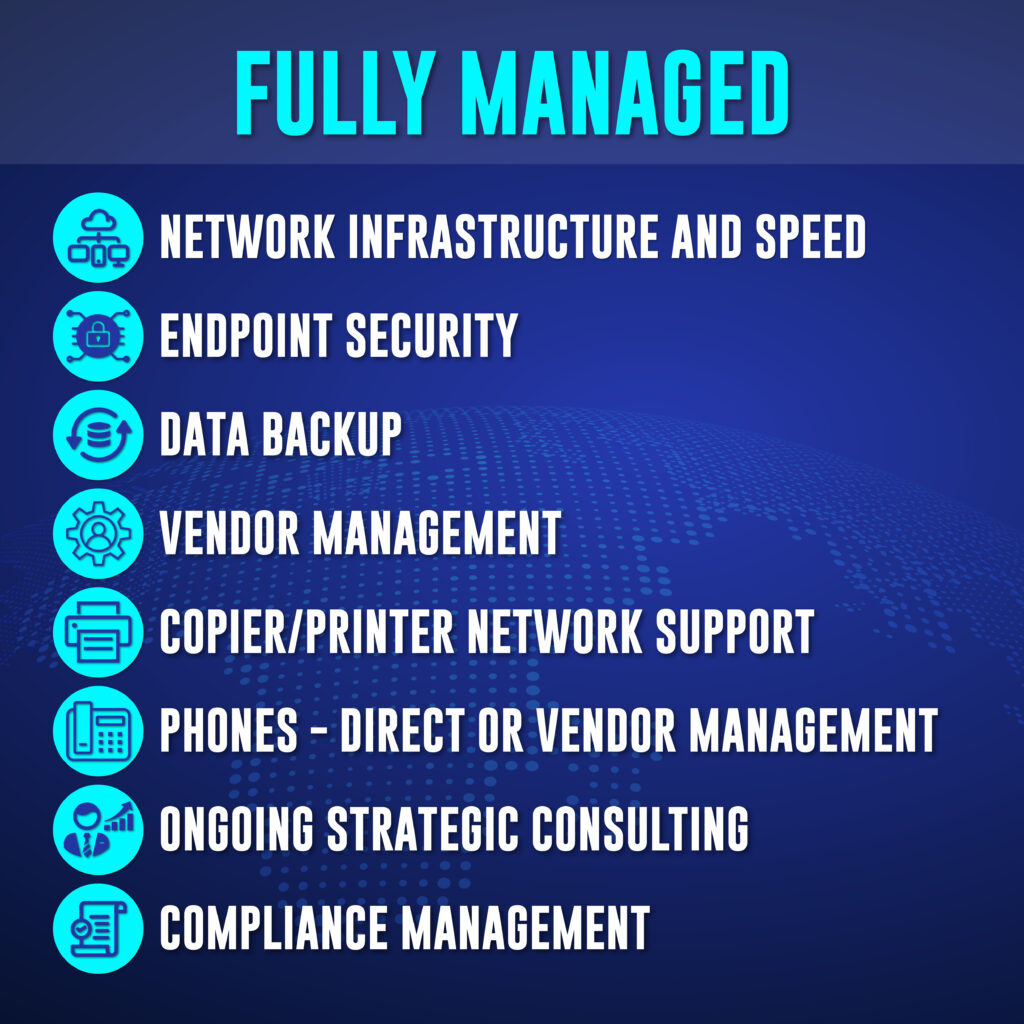Table of Contents
Thinking about teaming up with a Managed Service Provider but not sure where to begin? Don’t worry, we’re here to help! In this guide, we dive into the Managed IT Service Provider Pros and Cons for your business. We’re keeping it real – no misleading information. Just the genuine pros and cons of partnering with an MSP, all from the honest perspective of a current Managed Service Provider.
Managed IT Service Provider Pros and Cons
Pros:
- Expertise. Replicating the resources and expertise you gain with an MSP would be very expensive. Often having a dedicated cybersecurity specialist, multiple network administrators, a professional services team, a provisioning team, and a help desk.
- The suite of tools they have access to is oftentimes specialized and expensive. Due to the economies of scale of the computers and networks they support, they can manage and monitor your network at a higher level than internal IT (usually) at a lower cost.
- They have vast knowledge of technology at hundreds of different locations. They see what works and does not work in different settings. They are not “siloed” and can introduce you to new and better technology to improve your business operation.
- Robust processes and documentation to ensure tickets are completed in a timely fashion. There is a mutual incentive to fix problems quickly and ensure service tickets are minimized, which requires doing things right the first time!
- Allows scaling up and down easily. Pricing is often based on a per endpoint or user. As you grow, your technology spending is easy to predict, rather than having to hire an additional IT team member who may not be working at full capacity or even close to it.

Cons:
- You have access to the resources, but the amount of time you get is much less than if you had an internal team.
- They will not know the ins and outs of your business-specific applications or vendor nuances like an internal IT person could.
- Massive variation in the quality and responsiveness of MSPs. It can be difficult to determine which MSP to choose. Support and pricing can vary greatly! To help more with this, check out (16 questions as a potential Managed IT Provider). The responses to these questions will tell you a lot and help you choose the right provider.
- Employees don’t have contracts usually… Even if you’re unhappy with a provider. Oftentimes, there is a minimum of a one-year contract in place.
- Less direct management of your IT systems – Your provider will likely have a standard set of tools they implement. If you or your internal IT prefer a different set of tools, there will often be a mishmash. This is rarely an issue because most organizations hire a Managed Service Provider, so they do not have to consider these things. However, in rare cases, if they do want to stray away from the recommendations, it could be considered a con for both parties.
Have you gone through our detailed exploration of the Managed IT Service Provider Pros and Cons and are considering if an MSP is the ideal choice for your business? Need a bit more assurance? Don’t hesitate to contact us today for a free consultation to align your technology needs with your business objectives!


